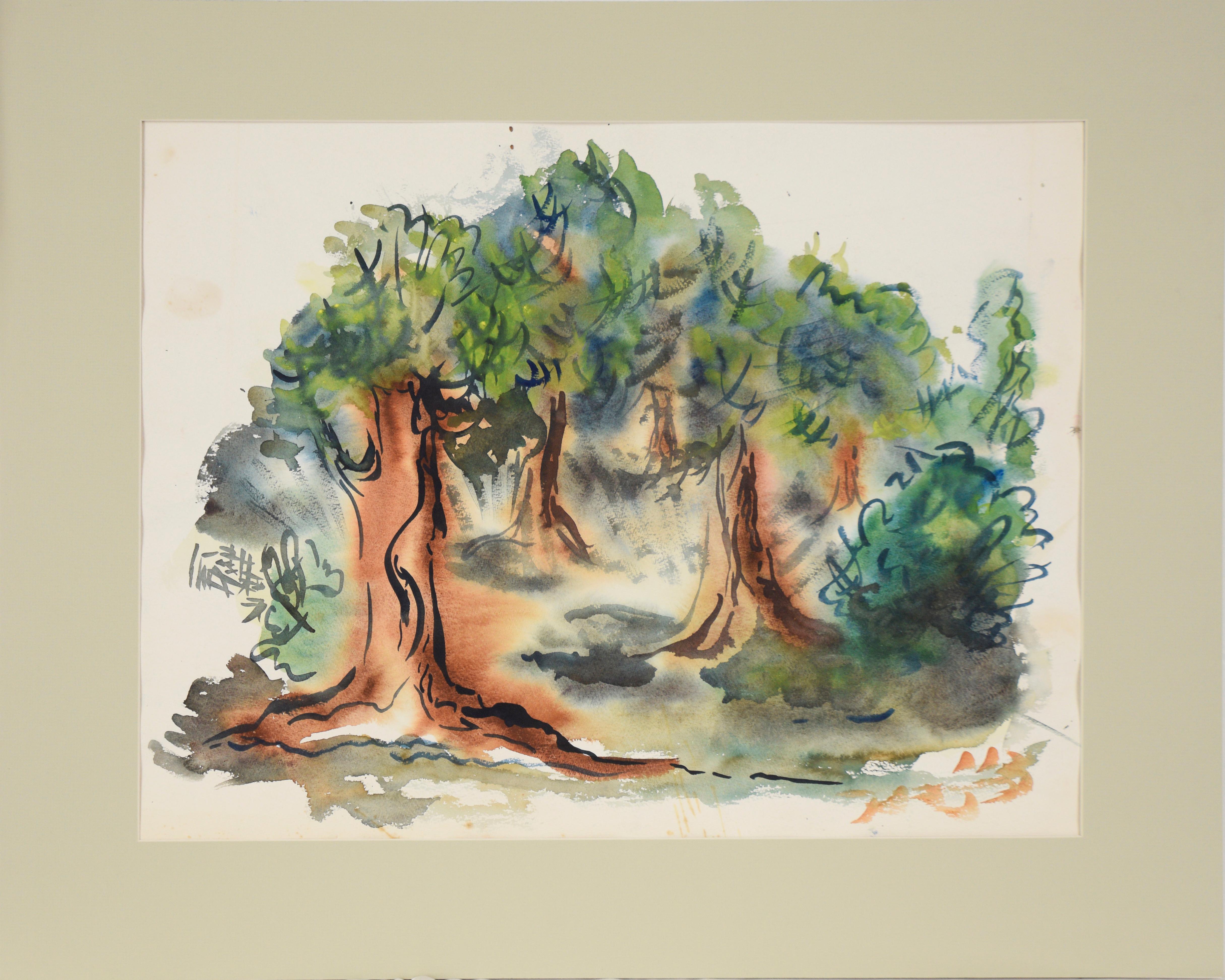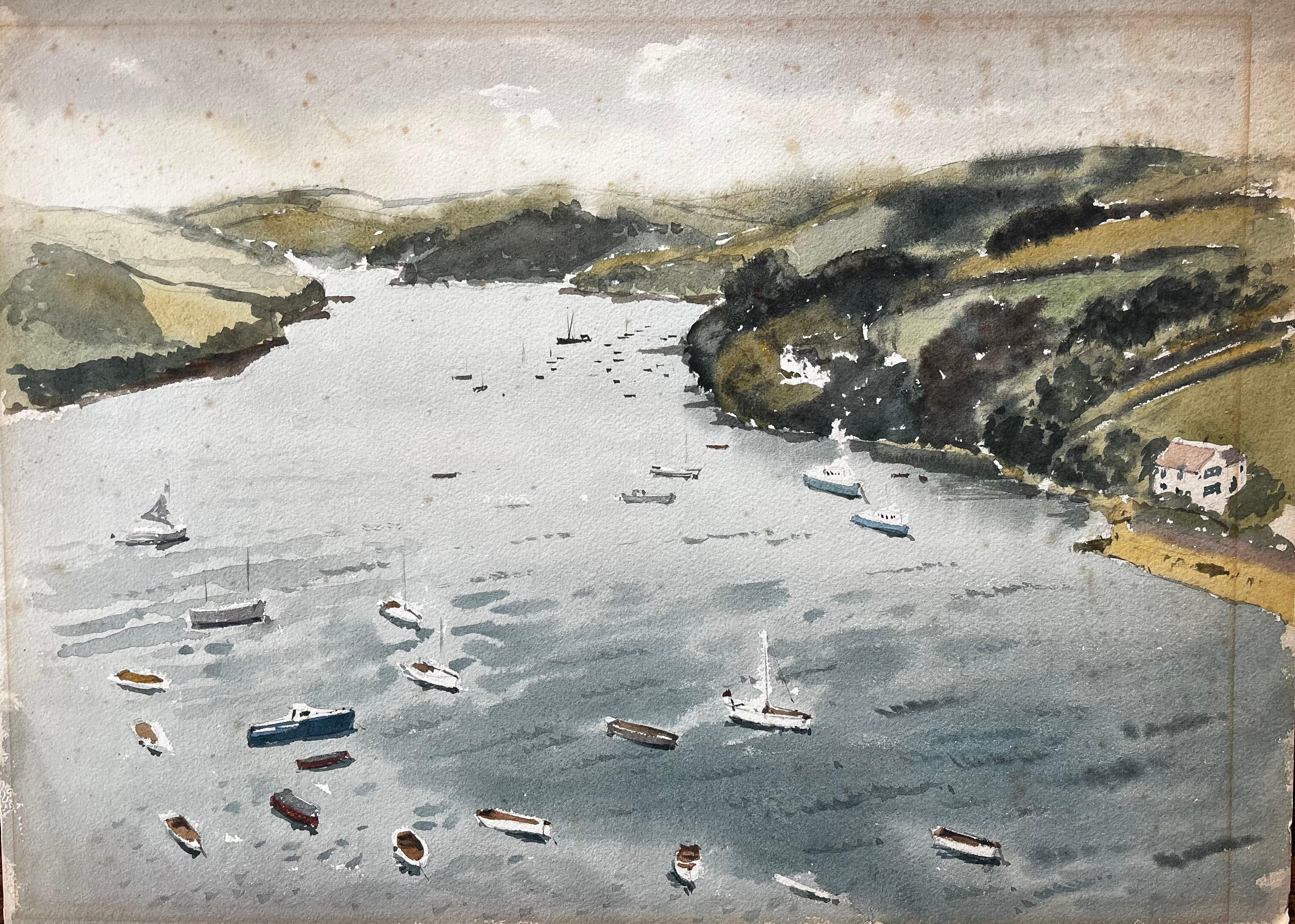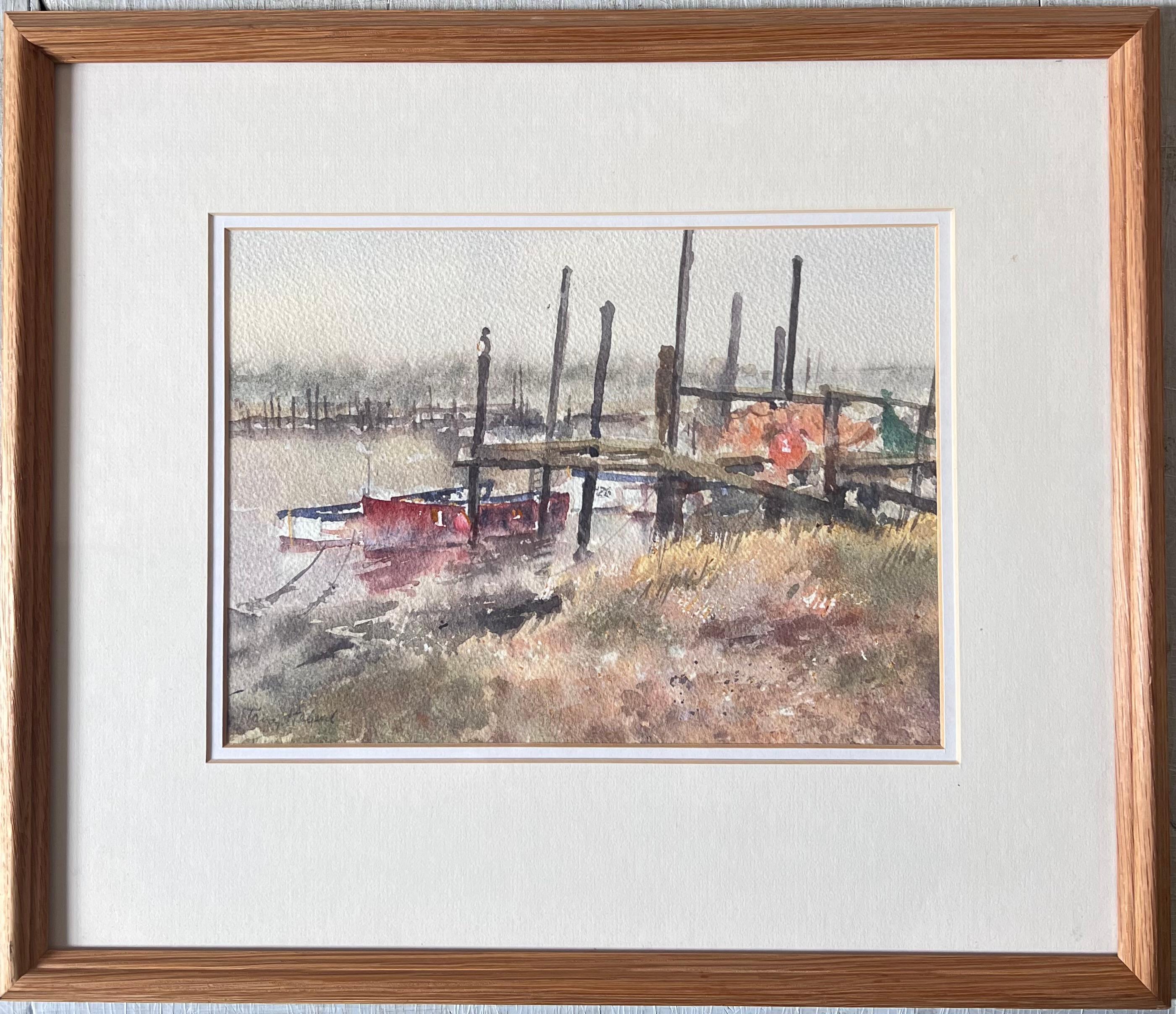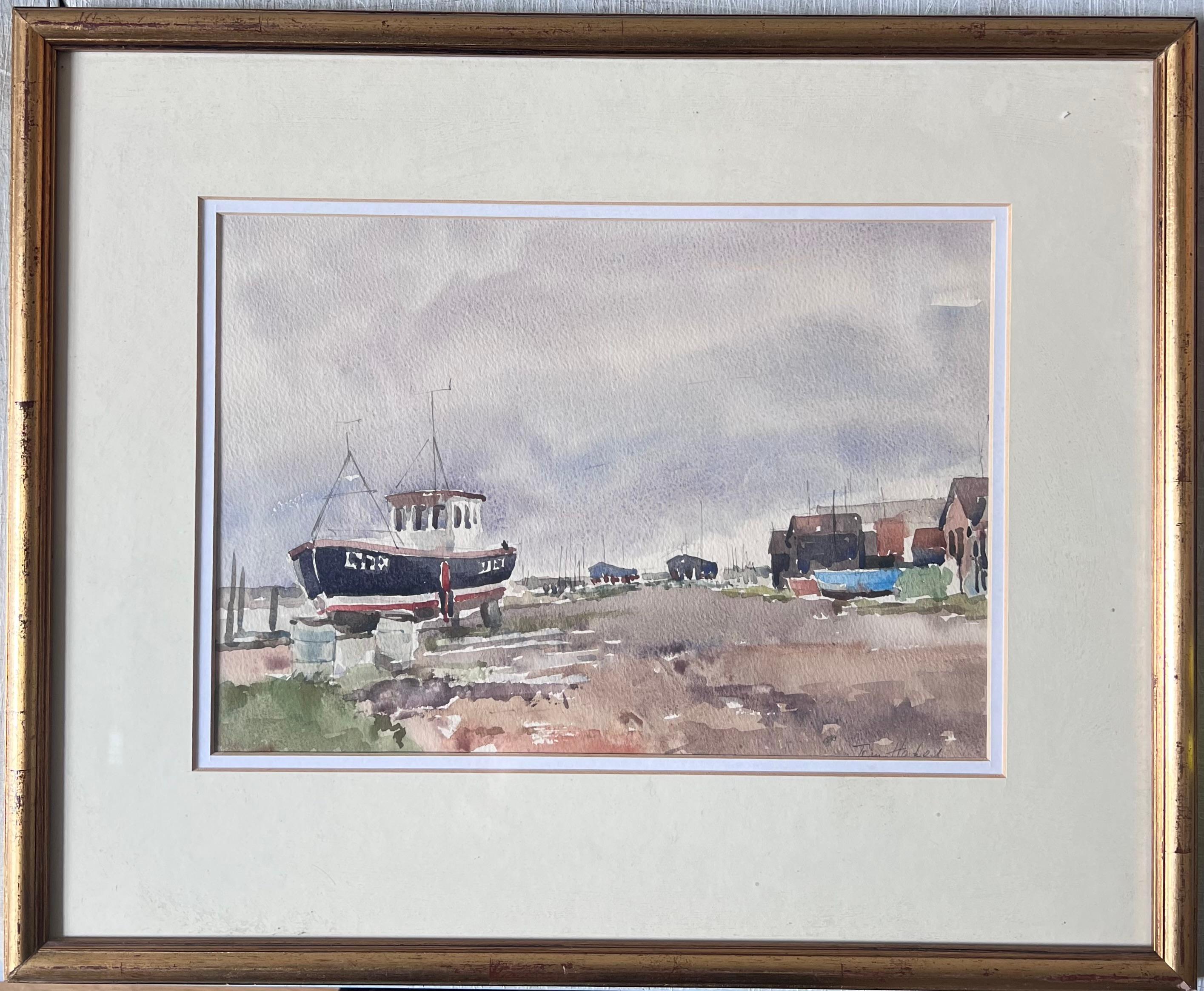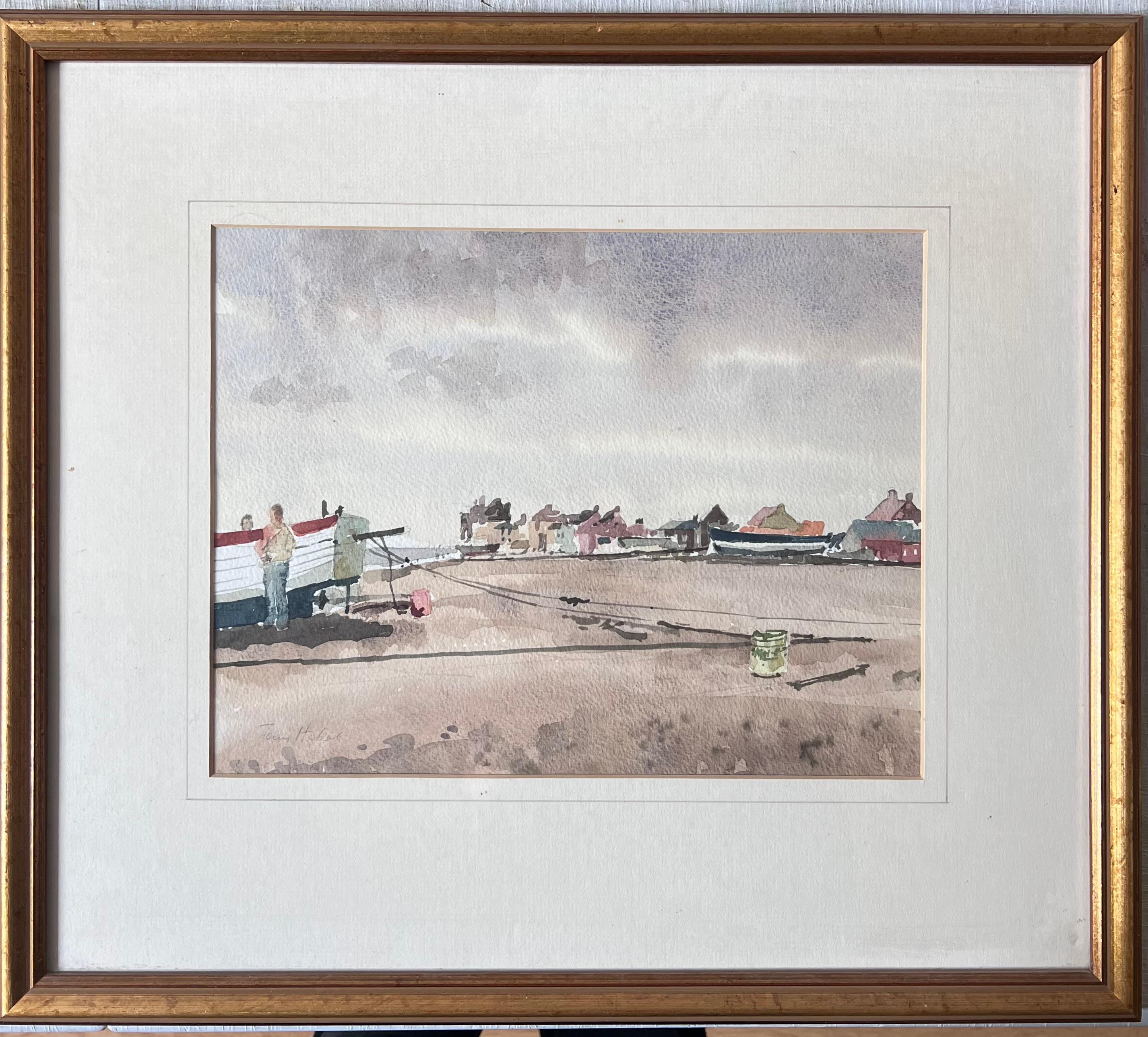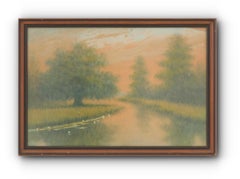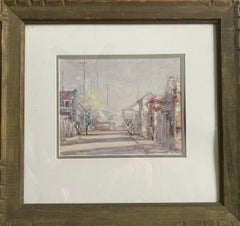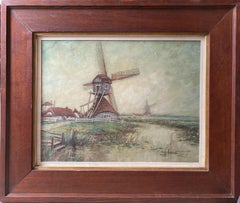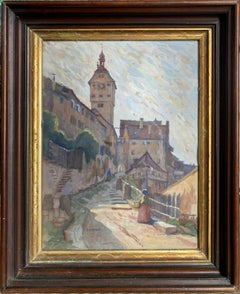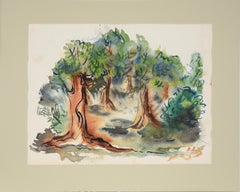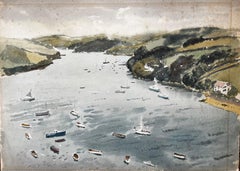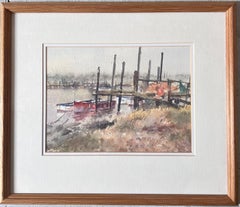Items Similar to "Sciamera Produce" - Framed New Orleans French Quarter Impressionist Watercolor
Want more images or videos?
Request additional images or videos from the seller
1 of 7
Lulu Ameen"Sciamera Produce" - Framed New Orleans French Quarter Impressionist Watercolor
On Hold
$495
On Hold
£375.33
On Hold
€433.41
On Hold
CA$694.52
On Hold
A$773.79
On Hold
CHF 408.10
On Hold
MX$9,380.99
On Hold
NOK 5,191.63
On Hold
SEK 4,836.34
On Hold
DKK 3,237.17
About the Item
An evocative watercolor that really captures the "old New Orleans" feeling. Much of the French Quarter still looks this way. In fact, this is a painting of an "Italian grocery" of the sort that still exists in New Orleans, stocking exotic goods from Italy. Many don't know that much of the New Orleans population is made up of Irish and Italians who came down in the late 19th and early 20th centuries from the East Coast; in fact, they're the source of the New Orleans "yat" accent you hear everywhere. There's this misconception that New Orleanians have a southern or "Cajun" accent; not true. What you hear is a bit of the Bronx, mostly! At any rate, back to the painting - lovely earth tones and deft draftsmanship to sketch out the shoppers and goods at shop level of these 19th-century buildings, which are still here, make this a wonderful memento of the "Big Easy." Expensively framed and ready to hang. Image itself is 13" x 21". 21" x 30", framed.
Proudly presented by Guy Lyman Fine Art, New Orleans, with our firm guarantee of satisfaction.
- Creator:Lulu Ameen
- Dimensions:Height: 21 in (53.34 cm)Width: 30 in (76.2 cm)
- Medium:
- Movement & Style:
- Period:
- Condition:
- Gallery Location:New Orleans, LA
- Reference Number:1stDibs: LU99438121902
About the Seller
5.0
Vetted Professional Seller
Every seller passes strict standards for authenticity and reliability
Established in 2008
1stDibs seller since 2018
307 sales on 1stDibs
Typical response time: 3 hours
- ShippingRetrieving quote...Shipping from: New Orleans, LA
- Return Policy
Authenticity Guarantee
In the unlikely event there’s an issue with an item’s authenticity, contact us within 1 year for a full refund. DetailsMoney-Back Guarantee
If your item is not as described, is damaged in transit, or does not arrive, contact us within 7 days for a full refund. Details24-Hour Cancellation
You have a 24-hour grace period in which to reconsider your purchase, with no questions asked.Vetted Professional Sellers
Our world-class sellers must adhere to strict standards for service and quality, maintaining the integrity of our listings.Price-Match Guarantee
If you find that a seller listed the same item for a lower price elsewhere, we’ll match it.Trusted Global Delivery
Our best-in-class carrier network provides specialized shipping options worldwide, including custom delivery.More From This Seller
View AllAlexander Drysdale, Live Oak and Cypress Trees - Provenance - Framed
By Alexander Drysdale
Located in New Orleans, LA
A classic Alexander Drysdale bayou scene, with the characteristic orangey/peach Impressionistic glow, out of the estate of Kenneth Abshire of Gulfport, MS. If you clicked on this, yo...
Category
1910s Impressionist Landscape Drawings and Watercolors
Materials
Oil
"French Quarter Scene" - 20th Century Framed New Orleans Watercolor Painting
Located in New Orleans, LA
While his name is not as well-known as certain other classic New Orleans artists, Arnold Turtle is highly regarded and his work is prized by connoisseurs...
Category
1930s Impressionist Landscape Drawings and Watercolors
Materials
Watercolor
"Dutch Scene with Windmills" - Framed Early 20th Century Watercolor Landscape
Located in New Orleans, LA
A beautiful antique original watercolor of the Dutch landscape. I apologize for the reflections on the glass - this piece comes already framed and behind glass, in an antique wood fr...
Category
1910s Impressionist Landscape Drawings and Watercolors
Materials
Watercolor
"Scene in Wurttemberg" - Late 19th Century Antique Framed Watercolor Painting
Located in New Orleans, LA
I've included a photo here of the blue sticker a movie studio put on the back of this beautiful old German pastel when they rented it from my Magazine Street gallery for the shoot of...
Category
Late 19th Century Impressionist Landscape Drawings and Watercolors
Materials
Watercolor
"Four Original New Orleans Watercolor Scenes" Framed Late 20th Century Paintings
Located in New Orleans, LA
Four luscious original watercolors showing iconic scenes around New Orleans, by New Orleans/Missouri artist Hubert Hanush. "French Quarter Courtyard," with E.L. Borenstein Collection label on back - framed 17.5 x 21.5. Borenstein was an important New Orleans art dealer and the so-called "Father of Preservation Hall...
Category
Late 20th Century Impressionist Landscape Drawings and Watercolors
Materials
Watercolor
"Cottage by the Sea" - Framed 19th-Century Antique Watercolor Seascape Painting
Located in New Orleans, LA
A lovely original watercolor of a cottage by the sea, showing a fisherman draping his nets over the porch rail to dry. I would guess this to be earl...
Category
Early 20th Century Impressionist Landscape Drawings and Watercolors
Materials
Watercolor
$396 Sale Price
20% Off
You May Also Like
Through The Trees - Original Watercolor on Paper
Located in Soquel, CA
Through The Trees - Original Watercolor on Paper
Original watercolor painting depicting a grove of vibrant green trees by Bertram Spencer (American, 1918-1992).
Presented in a lig...
Category
Mid-20th Century American Impressionist Landscape Drawings and Watercolors
Materials
Paper, Watercolor
$448 Sale Price
20% Off
1963 Watercolour of Salcombe Harbour Devon with Boats, Estuary and Hillside View
Located in Cirencester, Gloucestershire
Title: 1963 Watercolour of Salcombe Harbour Devon with Boats, Estuary and Hillside View
By Tony Herbert (1927-2024)
Medium: Watercolor on artists paper, on board
Size: 13.75 x 19 inc...
Category
20th Century Impressionist Landscape Paintings
Materials
Watercolor
19th C. American Impressionist Gouache of Colorado Mountains in Spring
By Charles Partridge Adams
Located in Denver, CO
This original circa 1910s plein air field study by renowned Colorado landscape artist Charles Partridge Adams captures the serene beauty of the Rocky Mountains in a masterful display...
Category
1910s American Impressionist Landscape Paintings
Materials
Gouache
Vertical Posts and Small Boats Moored Along the River Blyth Southwold
Located in Cirencester, Gloucestershire
River Blyth Southwold
Signed By Tony Herbert (1927-2024)
Medium: Watercolor on artists paper on board, framed - glass covered
Framed: 16 x 18 inches
Watercolour: 8.5 x 11 inches
Con...
Category
20th Century Impressionist Landscape Paintings
Materials
Watercolor
Fishing Boats Pulled up on Dry Land Beside a Rough Coastal Track Watercolour
Located in Cirencester, Gloucestershire
Fishing Boat Landscape
Signed By Tony Herbert (1927-2024)
Medium: Watercolor on artists paper on board, framed - glass covered
Framed: 16.5 x 19.5 inches
Watercolour: 9 x 12 inches
...
Category
20th Century Impressionist Landscape Paintings
Materials
Watercolor
Figures with a Beached Fishing Boat on Aldeburgh Beach Watercolour
Located in Cirencester, Gloucestershire
Aldeburgh Beach
Signed By Tony Herbert (1927-2024)
Medium: Watercolor on artists paper on board, framed - glass covered
Framed: 17.5 x 20 inches
Watercolour: 9.5 x 12 inches
Conditi...
Category
20th Century Impressionist Landscape Paintings
Materials
Watercolor
More Ways To Browse
Black Background Paintings
Etching Plate
Paintings With Hearts
Tree Of Life Art
Painting 1995
Reproduction Art
Italian Love Art
Window Frame
Signed Picasso
E Paintings
French Culture
Street Scenes
Contemporary Oil Paintings Of New York
Picasso Paris
Vintage Expressionist Painting
Vintage Black People
Photography Of Interiors
Art Originals Of California
